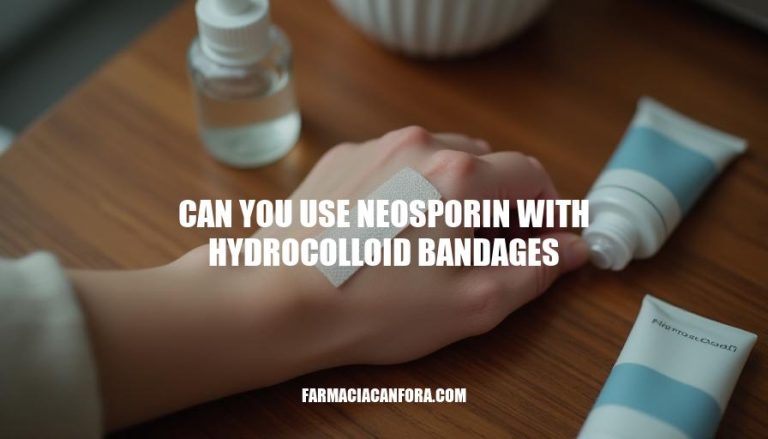


Neosporin is a popular antibiotic ointment that helps prevent infections in small cuts, scrapes, and burns. It has three antibiotics that work together to keep bacteria away and help wounds heal faster. Hydrocolloid bandages are special dressings that create a moist environment to aid healing.
They’re great for blisters, burns, and chronic wounds because they help manage fluid and reduce pain when changing the dressing.
Neosporin and hydrocolloid bandages are both commonly used for wound care, but their compatibility depends on the specific needs of the wound and the desired outcome.
Neosporin is an antibiotic ointment containing bacitracin, neomycin, and polymyxin B, which helps prevent infection and promote healing. Hydrocolloid bandages are occlusive dressings that create a moist environment to promote healing and protect the wound from external contaminants.
Infection Prevention: Neosporin can help prevent infection in minor cuts, scrapes, and burns.
Moist Healing Environment: Hydrocolloid bandages maintain a moist environment, which can aid in faster healing.
Protection: Hydrocolloid bandages protect the wound from bacteria and other contaminants.
Adhesion Issues: Applying Neosporin under a hydrocolloid bandage may prevent the bandage from sticking properly.
Excess Moisture: Neosporin may add extra moisture, which could interfere with the hydrocolloid bandage’s ability to draw out excess exudate.
Clean the Wound: Wash the wound with soap and cool water, then rinse and dry it thoroughly.
Apply Neosporin: Squeeze a small amount of Neosporin onto a clean applicator (e.g., a cotton swab) and apply an even layer to the wound.
Allow to Dry: Let the Neosporin dry for a few minutes to ensure it is absorbed by the skin.
Apply the Hydrocolloid Bandage: Carefully place the hydrocolloid bandage over the wound, ensuring it adheres well to the surrounding skin.
Monitor the Wound: Check the wound regularly and change the bandage as needed, following the manufacturer’s guidelines.
By following these steps, you can effectively use Neosporin and hydrocolloid bandages together while minimizing potential drawbacks. Always consult with a healthcare professional if you have any concerns or if the wound shows signs of infection.
Neosporin and hydrocolloid bandages are commonly used in wound care, but their compatibility depends on the specific needs of the wound.
Neosporin contains three antibiotics that help prevent infection and promote healing, while hydrocolloid bandages create a moist environment to aid healing.
Using these two products together can be beneficial for wound care, as they work synergistically to prevent infection and promote healing. However, there are potential drawbacks to consider, such as adhesion issues with the bandage and excess moisture that may interfere with the bandage’s ability to draw out excess exudate.
Monitor the wound regularly and change the bandage as needed.
It’s essential to note that proper wound care is crucial for optimal healing. If you have any concerns or if the wound shows signs of infection, consult a healthcare professional for personalized advice. They can provide guidance on the best course of treatment and help you navigate any potential issues with using Neosporin and hydrocolloid bandages together.